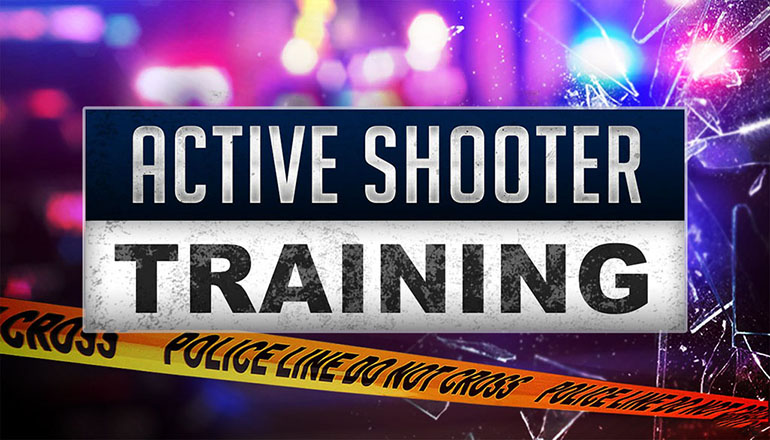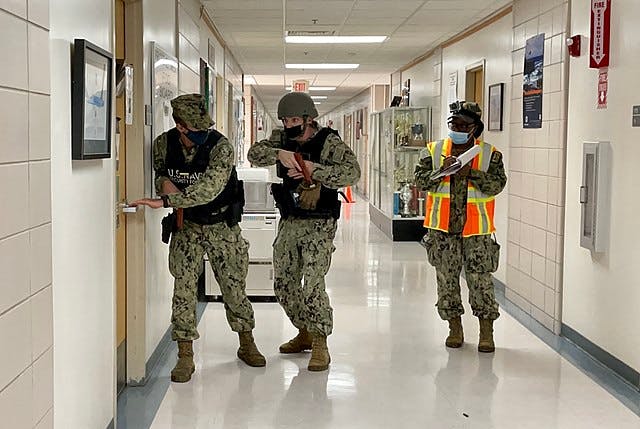Ensuring Public Safety And Security with Advanced Active Shooter Training Techniques
Ensuring Public Safety And Security with Advanced Active Shooter Training Techniques
Blog Article
Carrying Out Energetic Shooter Training: Ideal Practices for Developing a Safe and Prepared Community Atmosphere
As communities face the upsetting fact of energetic shooter events, the execution of comprehensive training programs ends up being essential. A successful method depends upon not only the development of tailored curricula that address regional threats but also the participation of varied stakeholders. By using a variety of training methods, neighborhoods can guarantee that all members are geared up with essential skills. However, the challenge hinges on maintaining an adaptive framework that evolves with emerging hazards. What are the critical aspects that can change a common training program right into a robust model for neighborhood durability?

Recognizing the Requirement for Educating
In an era marked by enhancing cases of physical violence in public spaces, understanding the requirement for energetic shooter training has never ever been a lot more critical. Thorough training efforts can outfit individuals with the expertise and abilities to react emphatically.
Additionally, the emotional influence of physical violence on people and areas can not be overstated. Training cultivates a feeling of empowerment and readiness, making it possible for individuals to really feel even more secure in their surroundings. It additionally advertises a society of security, where recognition and vigilance become integral components of every day life. The advantages of active shooter training expand past instant reaction; they include enhancing communication protocols and boosting total precaution within organizations.
Trick Parts of Effective Programs
Reliable energetic shooter training programs include a number of key components that boost preparedness and response capacities. First, thorough curriculum growth is important, making sure that training content is relevant, evidence-based, and tailored to the details requirements of the company or area. This includes recognizing the characteristics of energetic shooter events and the emotional influence on people involved.
2nd, realistic training situations should be utilized to imitate possible situations, enabling individuals to practice decision-making and reaction methods in a regulated setting. These drills help with muscle mass memory and construct self-confidence among participants.
Third, an emphasis on interaction protocols is important. Developing clear lines of interaction amongst law enforcement, emergency responders, and participants makes certain worked with reactions during a case. Normal updates and correspondence course aid maintain interaction pathways clear and effective.
Fourth, continuous assessment and comments devices need to be incorporated right into the training program - active shooter training. Evaluating the performance of training via individual responses and efficiency metrics permits continuous enhancement
Finally, promoting a culture of safety and preparedness within the area motivates watchfulness and proactive steps, guaranteeing that individuals are not only skilled however likewise taken part in keeping a safe and secure setting.
Engaging Area Stakeholders

To properly engage these stakeholders, it is essential to interact the goals and benefits of the training. Holding informational sessions can assist clarify the training's function, address problems, and detail the functions each stakeholder might play. Producing a stakeholder advisory board can assist in recurring dialogue, enabling for varied viewpoints and insights to be incorporated into the training program.
Building connections with area leaders and companies is i loved this likewise vital. Their assistance can enhance outreach efforts, boost engagement, and make certain that training is tailored to the special demands of the area. Additionally, stakeholders can assist in distributing information and resources, strengthening the message of security and readiness.
Inevitably, involving neighborhood stakeholders not just reinforces the training campaign but also cultivates a sense of ownership among locals, bring about a more resilient and informed neighborhood qualified of reacting properly to possible risks.
Educating Distribution Techniques
Utilizing a variety of training shipment methods is vital to accommodate the varied discovering styles and requirements of participants in energetic shooter training programs (active shooter training). Efficient training can take several kinds, consisting of lectures, hands-on simulations, on the internet modules, and interactive workshops. Each approach serves a distinct objective and can improve the overall learning experience

On the internet components offer flexibility and accessibility, allowing individuals to learn at their own rate. These can consist of video clips, quizzes, and discussions to assess understanding. Interactive workshops urge seminar and analytical, promoting synergy and communication abilities.
Including a combined technique that review combines these methods not just enriches the training experience yet additionally guarantees that individuals are better prepared to react properly in case of an energetic shooter situation (active shooter training). By dealing with numerous learning preferences, organizations can produce an extra enlightened and receptive area
Continuous Analysis and Enhancement
Normal analysis and improvement of energetic shooter training programs are important to keeping their importance and performance. As hazards advance, so have to the strategies and methodologies employed in training. Continuous evaluation ensures that training web content mirrors the most recent knowledge on energetic shooter occurrences, integrating lessons picked up from recent occasions and changing for arising patterns.
To facilitate this procedure, organizations need to establish comments mechanisms that include individual examinations, professional reviews, and case debriefs. Accumulating data on participant efficiency during drills and workouts is important, as it highlights areas requiring enhancement and notifies future training sessions. Additionally, involving with legislation enforcement and emergency situation -responders can offer valuable understandings into the usefulness and applicability of training protocols.
Frequently scheduled testimonials of training materials and strategies ought to be mandated, fostering an atmosphere of helpful site advancement and adaptability. Organizations needs to also urge a culture of continuous knowing, where staff participants feel equipped to recommend modifications based upon their experiences. By dedicating to continuous examination and improvement, organizations not just enhance the performance of their active shooter training programs yet also strengthen their total commitment to security and preparedness within the community.
Final Thought
In conclusion, effective implementation of active shooter training requires a detailed technique that prioritizes neighborhood interaction and reasonable simulations. Eventually, a commitment to continuous training and improvement cultivates a culture of alertness and preparedness, ensuring a much safer atmosphere for all neighborhood members.
Report this page